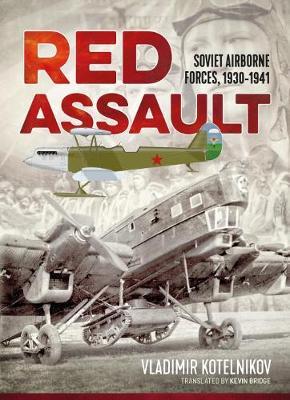Red Assault

Red Assault
There was a basis for such optimistic forecasts. Since the Soviets were in possession of such a quantitative, and qualitative advantage (and this was certainly the case) they were definitely able to advance. In the USSR aviation was undergoing development ahead of schedule, as were armoured tank technology, airborne assault troops, and chemical weapons. If the Soviets had tanks, aircraft, and chemical weapons, albeit in small quantities, any potential enemies would possess them too. The airborne assault troops however were a distinctly Soviet innovation. In this respect it was the Soviets that held an unquestionable advantage. It was here that the first groups of airborne paratroopers were dropped, and the first tanks and guns were dropped from the skies. The Red Army was conducting mass airborne assault operations during the course of exercises when no other nation on Earth had airborne assault troops.
In other field's Soviet military science and technology in many cases copied existing Western achievements. Licenses were obtained, or examples of foreign materiel were simply copied. As far as the airborne troops were concerned the Soviet military, and the designers were in unchartered territory, having come up with a number of innovative solutions, which were later adopted by the armed forces of other nations.
In this book the armame
PRP: 215.64 Lei
Acesta este Prețul Recomandat de Producător. Prețul de vânzare al produsului este afișat mai jos.
194.08Lei
194.08Lei
215.64 LeiIndisponibil
Descrierea produsului
There was a basis for such optimistic forecasts. Since the Soviets were in possession of such a quantitative, and qualitative advantage (and this was certainly the case) they were definitely able to advance. In the USSR aviation was undergoing development ahead of schedule, as were armoured tank technology, airborne assault troops, and chemical weapons. If the Soviets had tanks, aircraft, and chemical weapons, albeit in small quantities, any potential enemies would possess them too. The airborne assault troops however were a distinctly Soviet innovation. In this respect it was the Soviets that held an unquestionable advantage. It was here that the first groups of airborne paratroopers were dropped, and the first tanks and guns were dropped from the skies. The Red Army was conducting mass airborne assault operations during the course of exercises when no other nation on Earth had airborne assault troops.
In other field's Soviet military science and technology in many cases copied existing Western achievements. Licenses were obtained, or examples of foreign materiel were simply copied. As far as the airborne troops were concerned the Soviet military, and the designers were in unchartered territory, having come up with a number of innovative solutions, which were later adopted by the armed forces of other nations.
In this book the armame
Detaliile produsului










